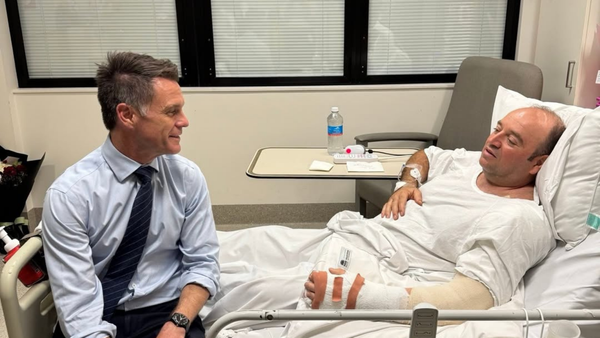Patients are being left in hospital corridors for “dangerously long periods” health leaders have warned.
The long waits mean patients are missing timely access to specialist care.
New data shows fewer than one in five acutely unwell patients are receiving their first assessment in an acute medical unit (AMU), the The Society for Acute Medicine (SAM) said.
AMUs are short stay assessment and admission units for patients who need specialist assessment and/or opinion.
Patients are referred to AMUs by emergency department (A&E) doctors, other hospital departments, or directly by a GP.
The latest Society for Acute Medicine benchmarking audit, carried out in June, included more than 10,000 patients.
It found nearly half were initially seen in emergency departments rather than AMUs, and over nine in 10 spent more than four hours waiting in A&E.
More than half of patients waited more than 12 hours in emergency departments, with older and frailer patients most likely to wait this long.
According to the SAM, a lack of beds in AMUs and on hospital wards means patients are left for “dangerously long periods” on corridors.

It said AMUs receive the majority of patients admitted to hospital from A&E, helping to maintain the flow of patients, so blockages have a big knock-on effect.
SAM’s new president, Dr Vicky Price, said: “Corridor care is causing harm for patients on a daily basis.
“It is associated with increased length of stay and increased mortality, and patients should be flowing through AMUs.
“The evidence shows that patients have better outcomes when they come through acute medical units – lower mortality, shorter stays and better patient experience – so we must fix this situation.”
SAM past president Dr Tim Cooksley added: “We have patients in corridors, not just in our emergency departments but in our acute medical units as well, and our occupancy levels are too high.
“We still have over 1,000 patients a day in England alone waiting more than 12 hours in emergency departments, and most of those are acute medical patients waiting for a bed on an acute medical unit.
“Many are older, frail and vulnerable to sustaining harm while they are waiting.”
A Department of Health and Social Care spokesperson said: “It is shocking corridor care has become a feature of the NHS and we are working at pace to turn around more than a decade of neglect.
“Despite NHS Accident and Emergency departments facing their busiest August ever, ambulance response times and handovers are the fastest they have been since the pandemic.
“But we know there’s more to do. That’s why we are expanding urgent and emergency capacity and upgrading hundreds of ambulances across the country, backed by an extra £450 million.”
Patients left in hospital corridors for ‘dangerously long periods’, experts warn
Waiting list for planned hospital treatment rises for third month in a row
Death toll from toxic cough syrup in India rises to 20 children as WHO intervenes
‘No evidence’ women perform worse on their period, experts suggest
Almost all heart attack victims have one of these four warning signs
Two people hospitalized from counterfeit Botox procedures, health officials say







